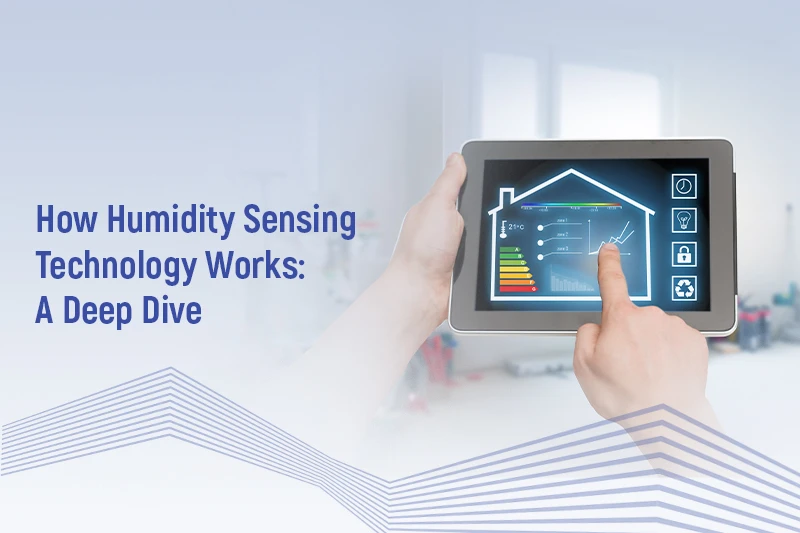Humidity sensing technology is not new but latest advancements have uncovered new heights in the HVAC offering. A crucial system required in various fields, humidity can have various ill effects which is why humidity sensors come to the rescue to enable businesses and buildings to maintain best conditions. Large factories, office buildings and residential areas are in need of advanced humidity sensing systems to keep their operations running smoothly and Messung Automation has a solution for every unique need. Advanced tech gives Messung’s humidity sensing an edge to enhance HVAC systems and optimize building functions as a whole. In addition, they also maintain a comfortable indoor environment. In this piece, we’ll examine how this tech works by highlighting Messung’s Humidity sensors and how they employ creative methods and solutions to keep moisture in check.
Overview of Humidity Sensing Technology
Humidity checkers are all about measuring and controlling the dampness in the air. These sensors track the level of water in the air, which in return helps control units to adjust quickly to maintain the right amount of moisture. These sensors work on a simple concept, when certain materials come in contact with water vapor, they react. This reaction causes changes that can be recorded as measurements of humidity.
Messung Automation’s humidity-sensors use a Thermoset-Polymer-based detector element. This component offers precise readings making it highly dependable. It is a good fit for several uses, be it air conditioning systems or even sterile rooms required in various industries such as pharmaceuticals. Messung’s sensors are designed with an extra layer of protection. This guard keeps the sensor free from pollutants while providing lasting performance and decreases the need for regular check-ups
Types of Humidity Sensors
Messung’s extensive industry experience provides them with the know-how of individual needs based on the nature of the industry. That’s why our humidity sensors are of various types. Each type utilizes specific mechanisms and tools to check humidity levels and produce accurate data.
Capacitive Humidity Sensors:
The structure of a capacitive sensor includes a die electric material. This material is placed between two layers of conductive plates. Changes in the air’s water vapour can modify the dielectric constant of the material. This causes a shift in capacitance. They transform this shift into a reading of humidity.
Capacitive sensors are accurate with fast response time making it a preferred choice for a wide variety of industries and applications.
Resistive Humidity Sensors:
Resistive humidity sensors make use of a hygroscopic material. This material alters its resistance when it encounters humidity variations. The device measures the change in resistance which enables it to give the humidity reading.
Resistive sensors are great for unstable conditions because of their durable nature. They can maintain stable readings even in unruly environments which change constantly.
Messung’s Thermoset-Polymer-based Humidity Sensors: A Closer Look
Messung’s Thermostat-Polymer-based humidity sensors leverage the latest developments in HVAC and customize systems accordingly. Our commitment to delivering high-performing tech ensures that you get the best service in the industry. The Thermoset-Polymer substance gives precise moisture measurements. Plus it boosts the sensor’s lifespan giving it a shield that wraps around the sensor for strengthening it. It can stand up to outside stuff like dust, pollutants, and other junk.
Messung’s Thermoset-Polymer sensors are perfect for outdoor use. These sensors face different weather elements and are sturdy enough to fight off impurities, which ensures their dependable operation even in tough situations.
Conclusion
Industries are starting to value pollution control, power saving, and indoor coziness more and more. This brings the focus on moisture tracking tech. It’s key for things like getting HVAC systems just right, or making sure cleanroom settings are perfect. To make the most of these new age sensors, you need to understand how they work and what their functions are. Messung’s humidity sensors take moisture tracking to the help level. With advanced settings that enable users to save more power and adjust temperatures based on comfort levels, Messung provides products that define pleasant living.
Humidity sensors have improved manifold over the past decade, all thanks to companies like Messung Automation. Making use of new materials and designs, Messung’s humidity sensors are very accurate, reliable, and tough. You can choose from different sensor types from our flexible and adaptable humidity sensors range built to serve different purposes.

